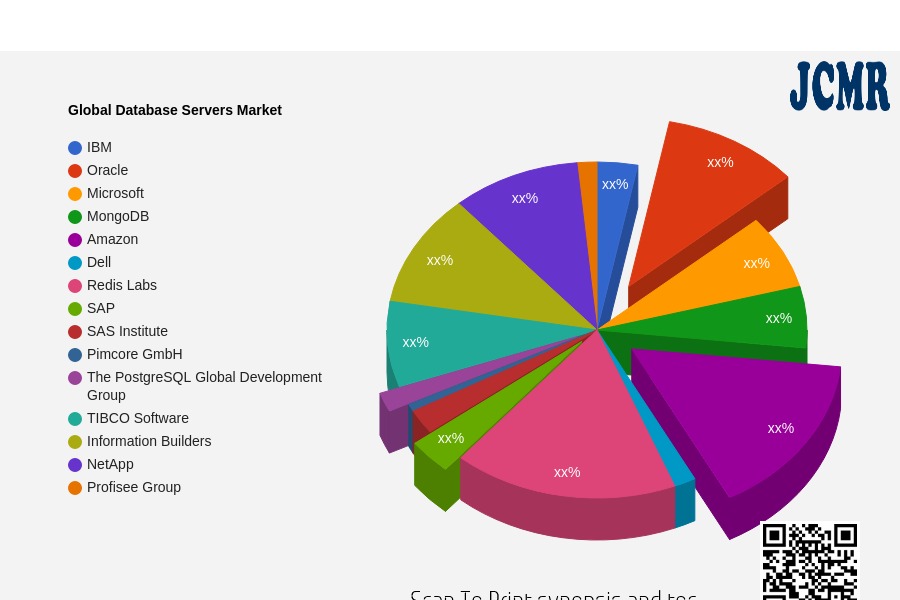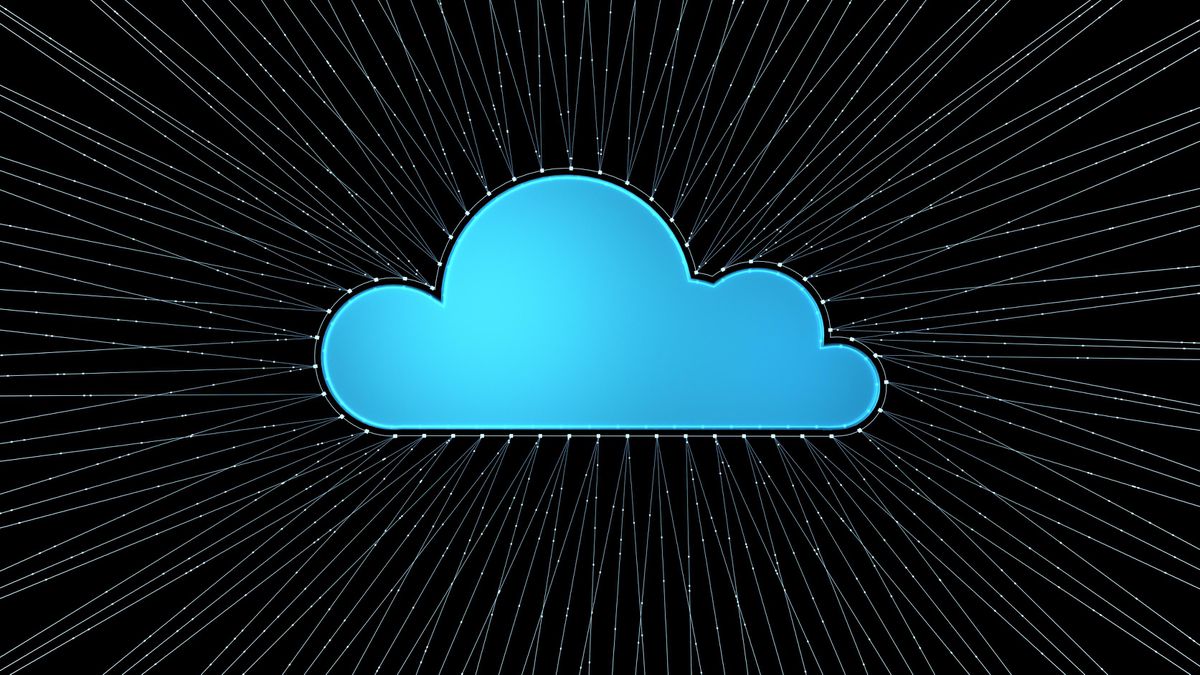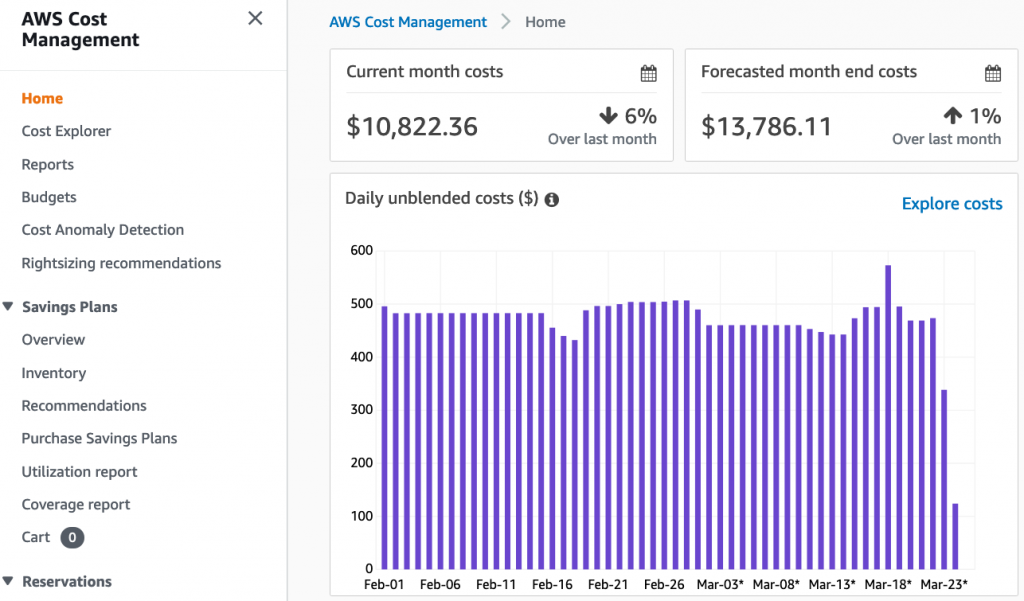
JCMR recently announced market survey which covers overall in-depth study including additional study on COVID-19 impacted market situation on Global Database Servers Market. The Research Article Entitled Global Database Servers Market provides very useful reviews & strategic assessment including the generic market trends, upcoming & innovative technologies, industry drivers, challenges, regulatory policies that propel this Universal market place, and major players profile and strategies. The research study provides forecasts for Database Servers investments till 2029.
DOWNLOAD INSTANT SAMPLE [email protected] jcmarketresearch.com/report-details/1295412/sample
Following Key Segments covers in the Global Database Servers Market
|
Database Servers Segment |
Details |
|
Market Analysis By Companies |
IBM, Oracle, Microsoft, MongoDB, Amazon, Dell, Redis Labs, SAP, SAS Institute, Pimcore GmbH, The PostgreSQL Global Development Group, TIBCO Software, Information Builders, NetApp, Profisee Group, ASG Technologies, Tealium, FUJITSU |
|
Market Analysis By Type |
[Type] |
|
Market Analysis By Applications |
[Application] |
|
Market Analysis By Regions along with their respective countries |
North America, Europe, China, Japan, Rest of the World |
Geographically, this report is segmented into several key Regions along with their respective countries, with production, consumption, revenue (million USD), and market share and growth rate of Database Servers in these regions, from 2012 to 2029 (forecast), covering
Share your budget and Get Exclusive Discount @: jcmarketresearch.com/report-details/1295412/discount
There are following 15 Chapters to display the Global Database Servers Market.
Table of Contents
1 Market Overview
1.1 Global Database Servers Introduction
1.2 Market Analysis by [Type]
1.3 Market Analysis by [Application]
1.4 Market Analysis by North America, Europe, China, Japan, Rest of the World
1.5 Market Dynamics
1.5.1 Market Opportunities
1.5.2 Market Risk
1.5.3 Market Driving Force
2 Manufacturers Profiles
2.1.1 Business Overview
2.1.2 Global Database Servers Market Type and Applications
2.1.3 Database Servers Sales, Price, Revenue, Gross Margin and Market Share and SWOT analysis (2019-2020)
3 Global Database Servers Market Competition, by Manufacturer
4 Global Database Servers Market Analysis by Regions including their countries
5 North America, Europe, China, Japan, Rest of the World
6 Product Type- [Type]
7 Application Type- [Application]
8 Key players- IBM, Oracle, Microsoft, MongoDB, Amazon, Dell, Redis Labs, SAP, SAS Institute, Pimcore GmbH, The PostgreSQL Global Development Group, TIBCO Software, Information Builders, NetApp, Profisee Group, ASG Technologies, Tealium, FUJITSU
.
.
.
10 Global Database Servers Market Segment by [Type]
11 Global Database Servers Market Segment by Application
12 Global Database Servers Market COVID-19 Impacted Forecast (2020-2028)
13 Sales Channel, Distributors, Traders and Dealers
14 Research Findings and Conclusion
15 Appendix
….Continued
Furnish this study and Enquire for customization in Global Database Servers Market Report @ jcmarketresearch.com/report-details/1295412/enquiry
Research Methodology while conducting the study of Global Database Servers Market
JCMR Primary research-
Our primary research efforts include reaching out participants through mail, tele-conversations, referrals, professional networks and face-to-face interactions. We are also in professional corporate relations with various companies discussions, fulfilling following functions:
That allow us greater flexibility for reaching out industry participants and commentators for interviews and
Validates and improves the data quality and strengthens research proceeds
Further develops analyst teams market understanding and expertise
Supplies authentic information about market size, share, growth and forecasts
Our primary research interview and discussion panels are typically composed of most experienced industry members. These participants include; however, not limited to:
Chief executives and VPs of leading corporations specific to industry
Product and sales managers or country heads; channel partners and top level distributors; banking, investments and valuation experts Key opinion leaders (KOLs)
JCMR Secondary research-
Our analyst refer a broad array of industry sources for our secondary, which typically include; however, not limited to: Company SEC filings, annual reports, company websites, broker & financial reports and investor presentations for competitive scenario and shape of the industry
Patent and regulatory databases for understanding of technical & legal developments
Scientific and technical writings for product information and related pre-emptions
Regional government and statistical databases for macro analysis
Authentic new articles, web-casts and other related releases for market evaluation
Internal and external proprietary databases, key market indicators and relevant press releases for market estimates and forecast
Complete report on Global Database Servers Market report spread across 200+ pages, list of tables & figures, profiling 10+ companies. Select license version and Buy this updated Research Report Directly @ jcmarketresearch.com/checkout/1295412
How Are We Different? & Why Choose Us?
We always believe in the quality, so JCMR will provide you instant 24*7 sales support. In case, you have any queries or any doubts on our study even after purchasing our report, then we will instantly provide you post purchase priority Research Analyst assistance on our report.
If you still have a question, give it a try– [email protected]
Find more research reports on Database Servers Industry. By JC Market Research.
- Email Software Industry Analysis, Market Size, Share, Trends, Growth and Forecast 2021 – 2029
- Email Encryption Industry Analysis, Market Size, Share, Trends, Growth and Forecast 2021 – 2029
- Email Template Builder Software Industry Analysis, Market Size, Share, Trends, Growth and Forecast 2021 – 2029
About Author:
JCMR global research and market intelligence consulting organization is uniquely positioned to not only identify growth opportunities but to also empower and inspire you to create visionary growth strategies for futures, enabled by our extraordinary depth and breadth of thought leadership, research, tools, events and experience that assist you for making goals into a reality. Our understanding of the interplay between industry convergence, Mega Trends, technologies and market trends provides our clients with new business models and expansion opportunities. We are focused on identifying the Accurate Forecast in every industry we cover so our clients can reap the benefits of being early market entrants and can accomplish their Goals & Objectives.
Contact Us: https://jcmarketresearch.com/contact-us
JCMARKETRESEARCH
Mark Baxter (Head of Business Development)
Phone: +1 (925) 478-7203
Email: [email protected]
Connect with us at – LinkedIn







